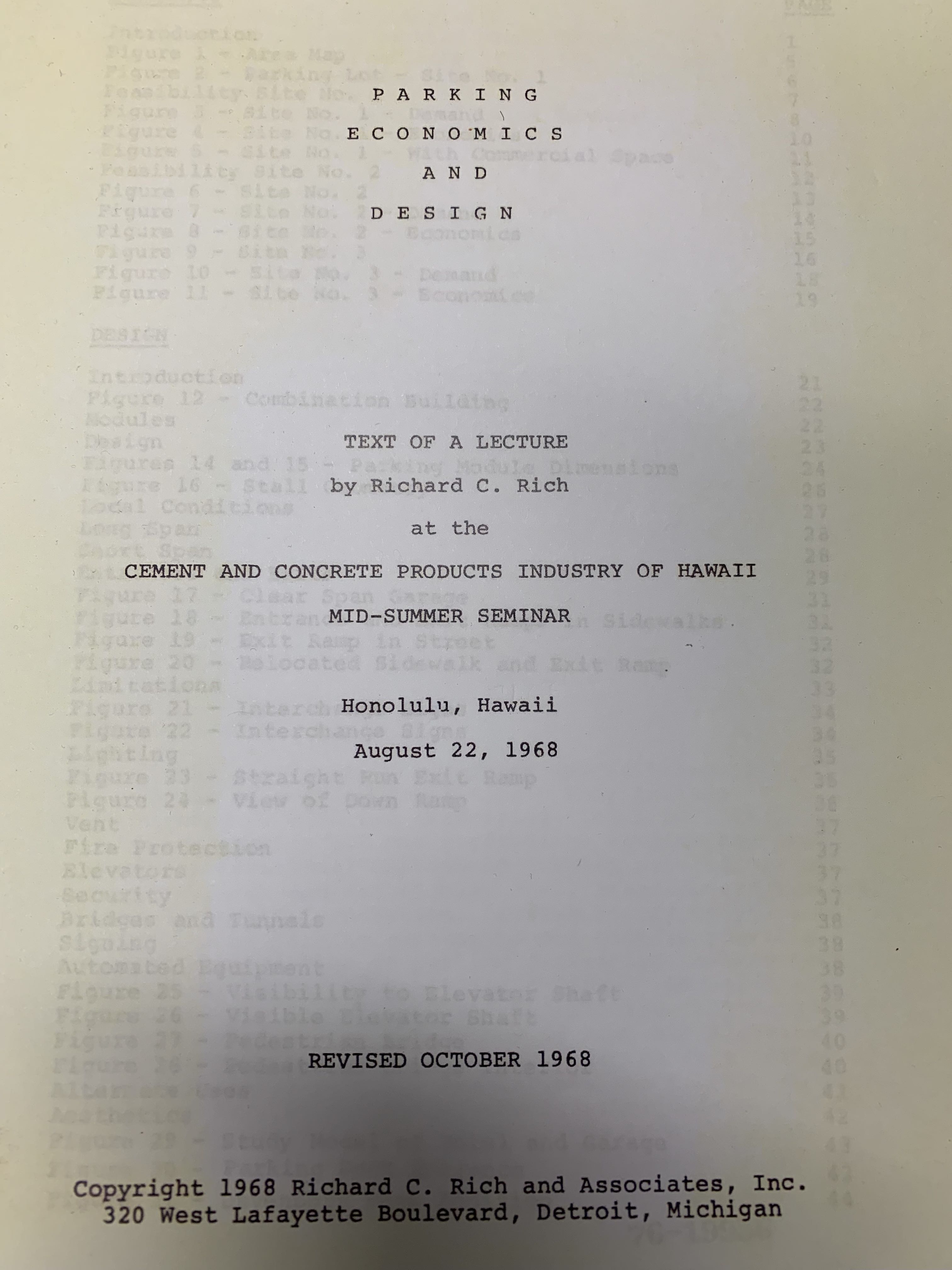In last month’s newsletter we told a story about how our president Richard C. Rich received a package containing a book that he published on August 22, 1968 titled ‘Parking Economics and Design’. This month we are sharing information from first chapter of Mr. Rich’s book which is called ‘Economics’. While much of what Mr. Rich published in his book in 1968 still holds true today, things are evolving.
“Demand is created by people driving to places of concentrated activity, the CBD, an airport, sports facilities, college or university campus, shopping center, factory or office buildings. The type of parking changes as the demand varies.” This still holds true today. However, growing rideshare and other mobility options are having some impact on demand in certain regions.
“CBD parking decks serve a number of varied generators – office buildings, stores, restaurants, hotels and theatres, and thus are “working” most of the day, with some operating around the clock. Others, in shopping centers, factories, hospitals, etc. receive more limited and specific use.” Today, demographic changes, increased mobility options, shared-use practices, changes in workplace environment, are impacting how much parking is needed, where, when, etc.
“There are major efforts to provide more parking downtown, with developers trying to build parking space to keep the Central Business District competitive with the vast and numerous suburban shopping centers.” Over the past several years we have been working more towards right sizing parking through shared-use strategies, transit-oriented developments and links to a variety of mobility options and opportunities.
“There are many factors which influence location and investment in parking structures downtown- street traffic flow, proximity of major generators, type of design and prevailing rates. A difference of one block could mean the financial success or failure of a parking garage.” While location is important, increasing mobility options are expanding the service area of downtown parking.
“Acceptable walking distance for the transient parker between the major generator and a the CBD garage, even in the larger cities, is a maximum of one block or 300 feet; and for all day or monthly parking a distance between 900 feet and 1,500 feet depending on the size of the cities and the rate structures.” With emerging pedestrian oriented, walkable downtowns, people are willing to walk further. The growth of micro-mobility options, such as scooters, allows people to travel further and from place to place without having to move their vehicles.
“It is interesting to note that the average United States automobile spends approximately 94% of its day and night parked, whether it be at home in the driveway, on the streets or in garages, while the owner is shopping or working.” This is still the case today.
“In most cases, today’s parking garage, even in the CBD, is dual-purpose, combining parking with ground floor retail space. Many of tomorrow’s garages will also include air-rights development above them.” Over the past 25 years we have seen a tremendous amount of priority placed on mixed-use parking structures in downtowns. In most cities today it is a priority, and in some cases even a requirement.




